The document discusses Amitav Ghosh's novel 'Gun Island,' which intertwines themes of mythology, climate change, and migration through the journey of a rare-book dealer reconnecting with his heritage in Kolkata and the Sundarbans. The narrative is rich with characters and explores the interactions between human experiences and their environmental contexts, emphasizing storytelling's power. The author uses etymology and historical connections to delve into the complexities of identity and belonging, drawing parallels between personal and broader socio-political issues.

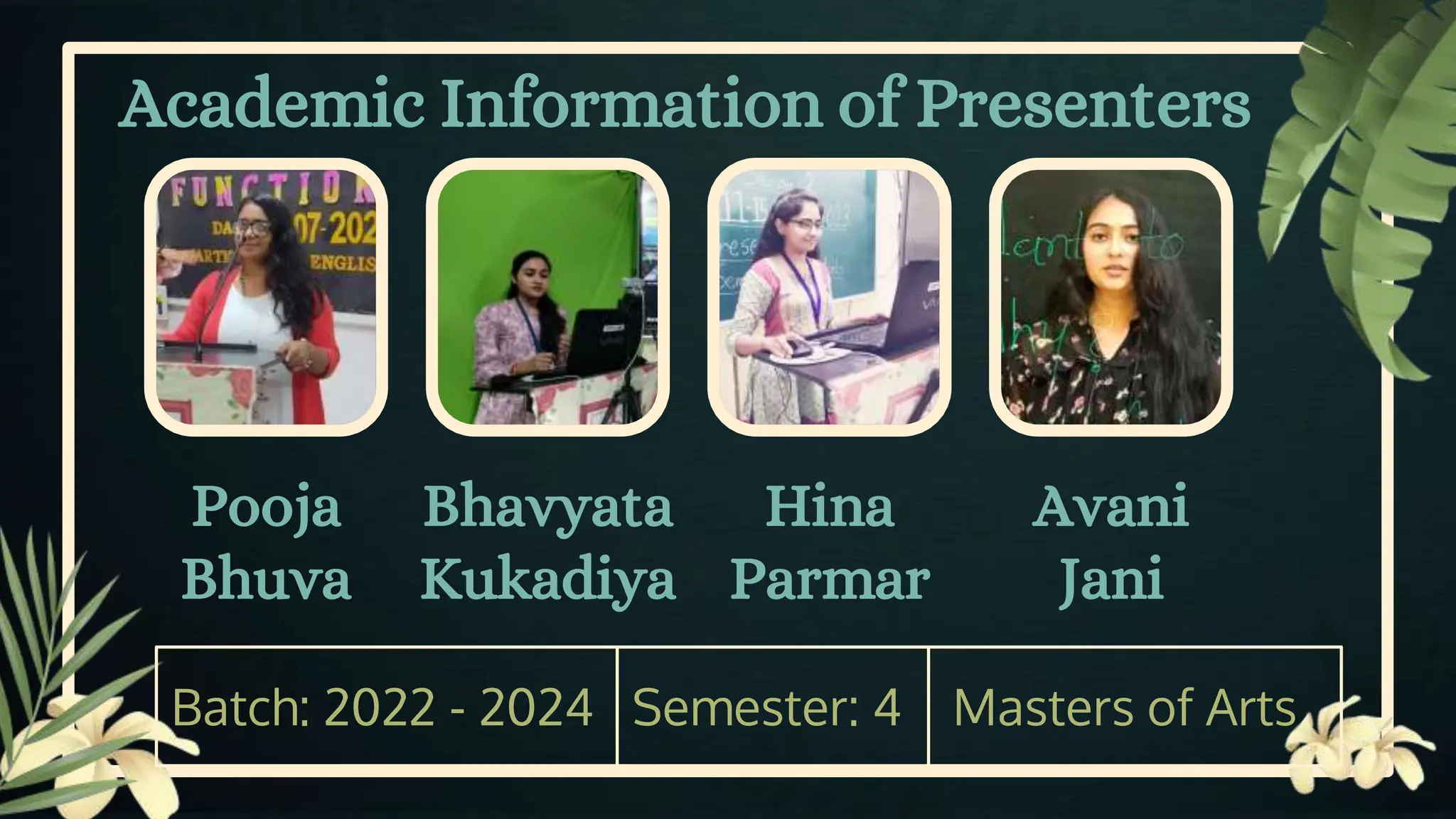

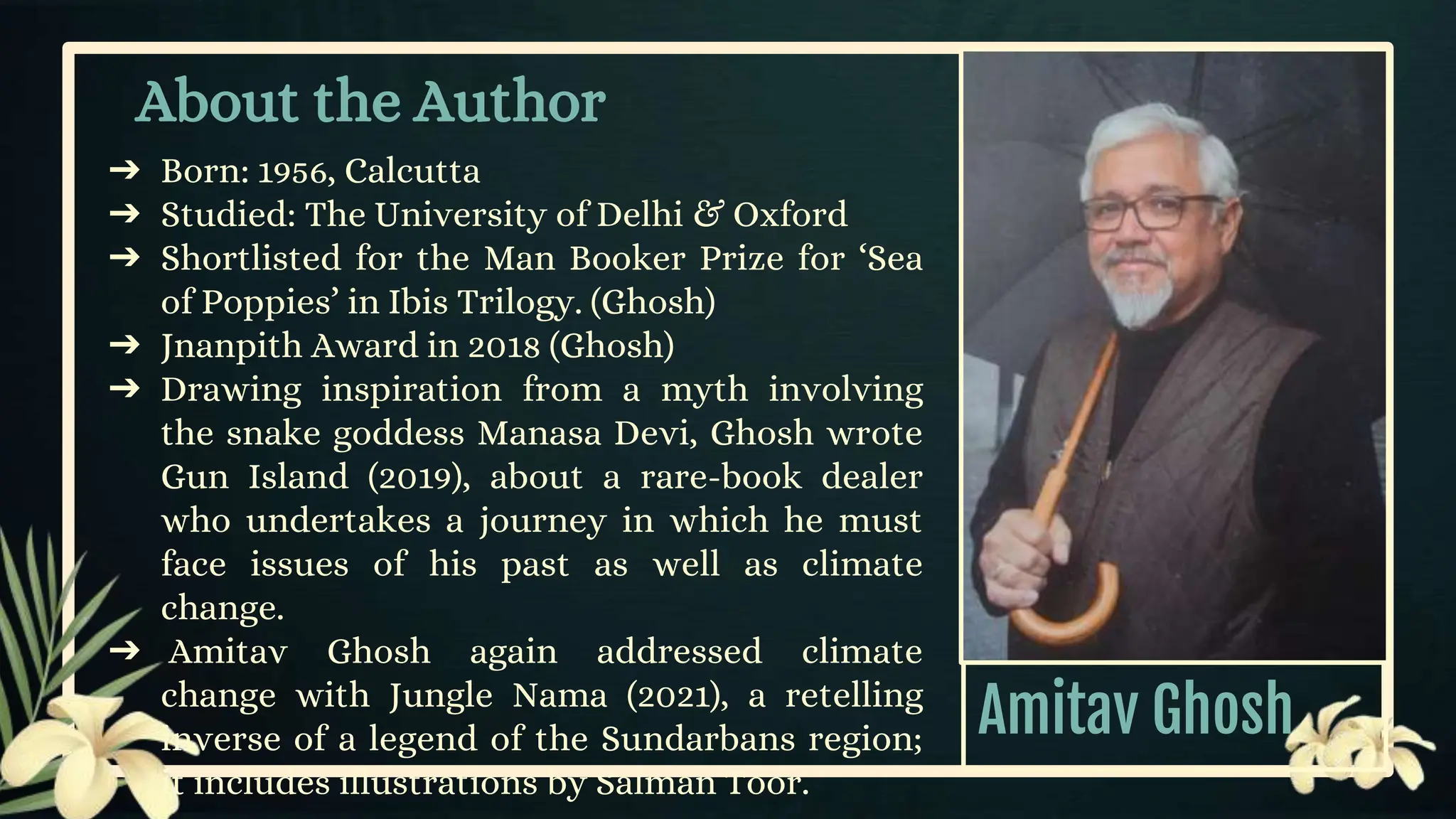
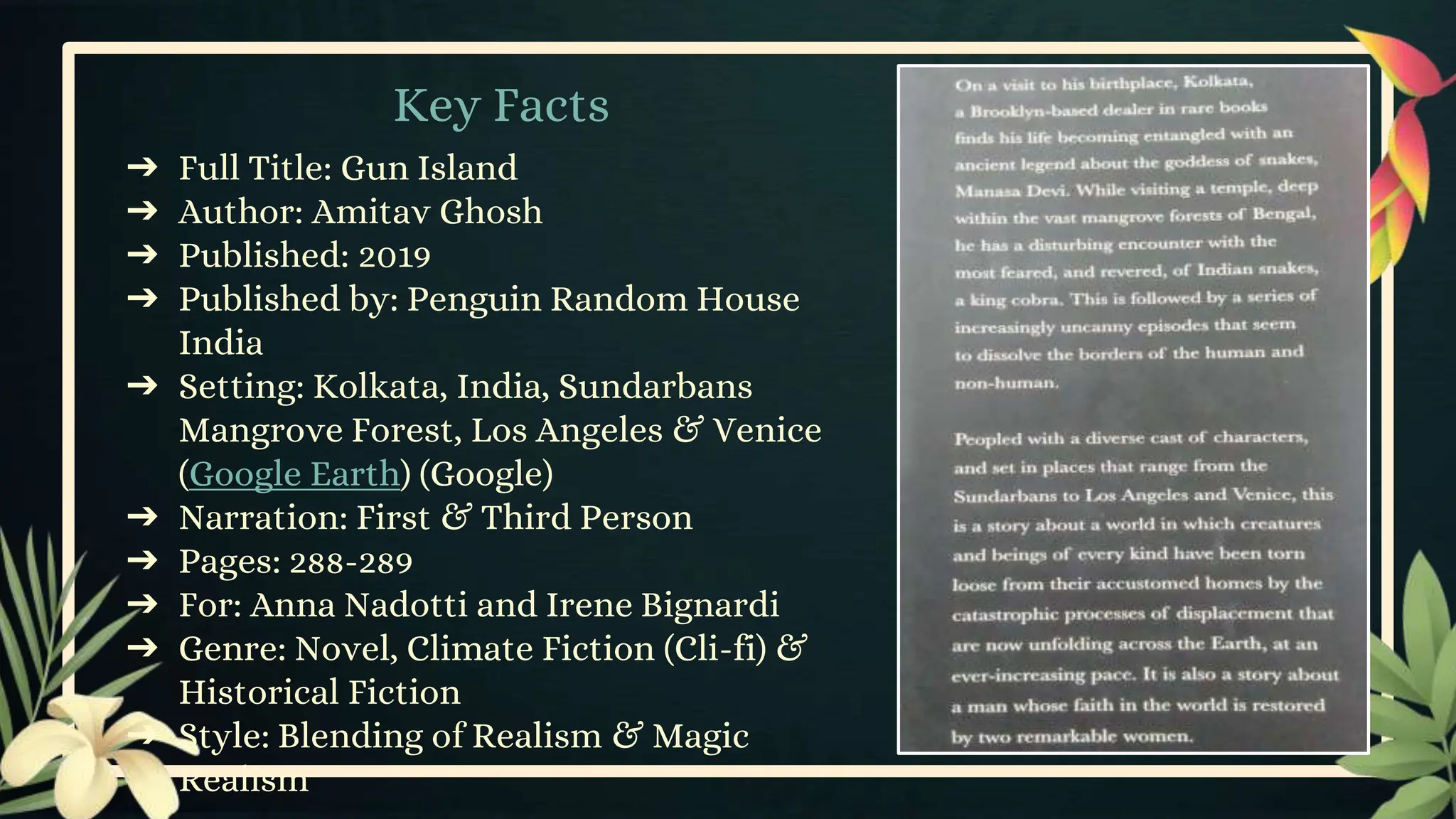


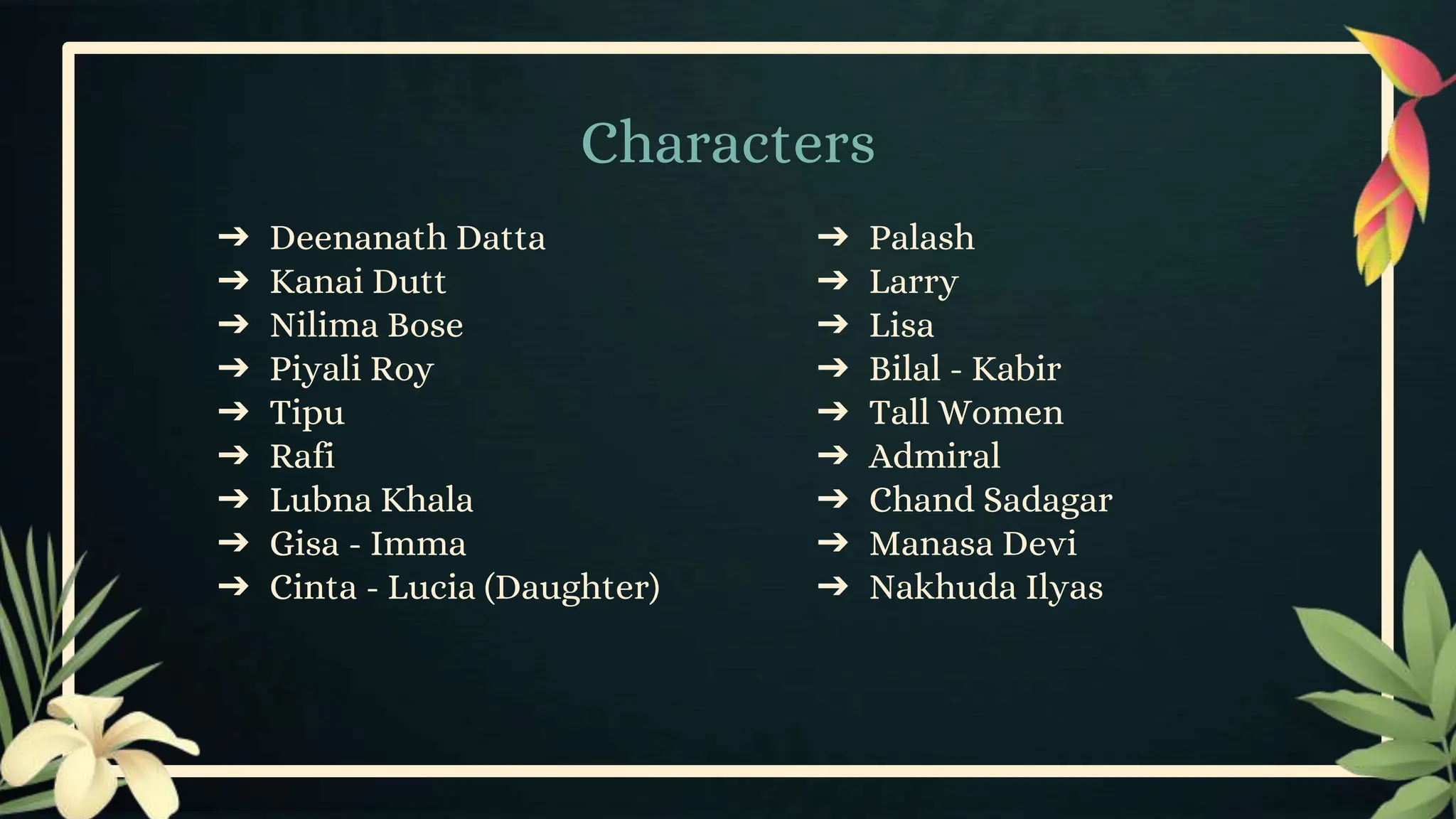
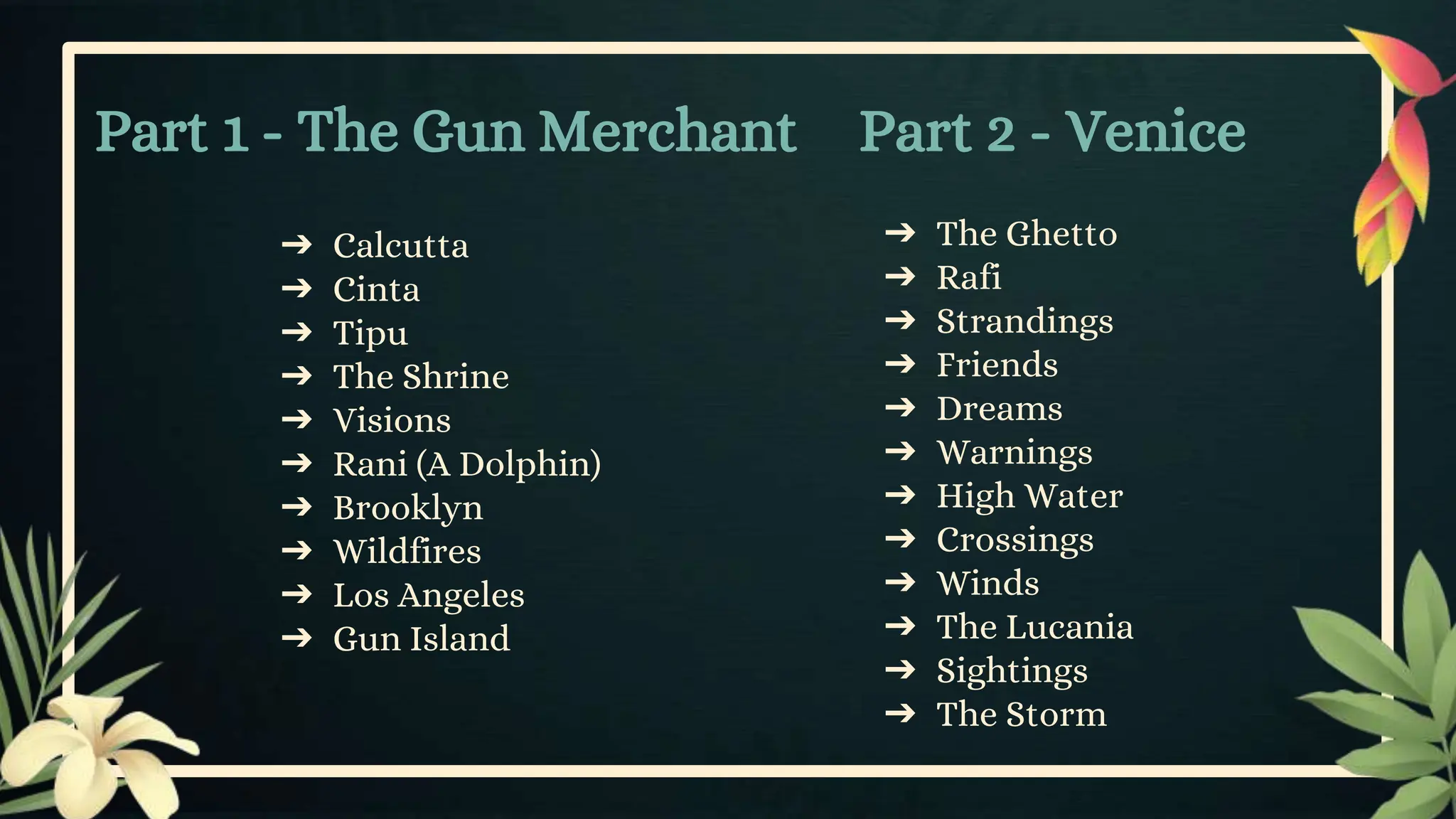



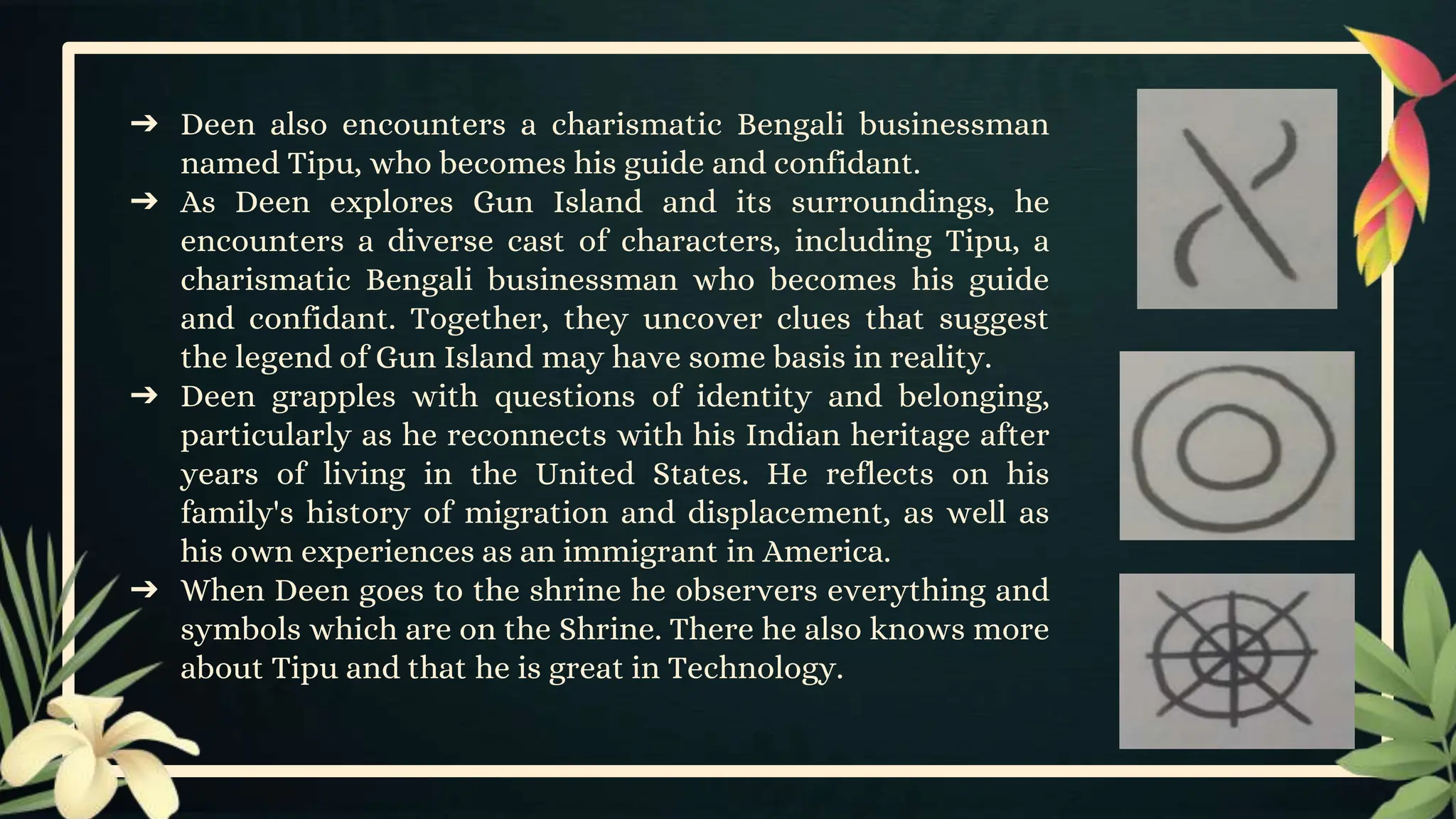









![1] Etymological Mystery and the title
‘Gun Island’.
"At the heart of the story of Gun Island, there lies an etymological mystery, a derivation that points to the deep and
inextricable intermeshing of cultures and civilizations over the ages. This is why etymology fascinates me: like sailors,
words, too, are travelers, and tracing their journeys is like describing voyages of adventures." (Bhattacharya, "Gun Island
by Amitav Ghosh.")
In "Gun Island," etymology isn't just a background detail—it's integral to the story.. It shows how language connects to
the world and changes over time, helping us understand the narrative better.
1.Title - ‘Gun Island
The title suggests a story about a merchant who went to Venice and found a place where weapons
were made, called a foundry. The word "ghetto" comes from Venice and is connected to where
Jewish people lived. Venice also has connections to guns because of its name in Arabic. So, the
title hints at a story about a merchant discovering this connection between Venice, weapons, and
the Jewish area.](https://image.slidesharecdn.com/okcvbgsxskgows68mhzr-gun-island-240221180147-df45a621/75/Group_Presentation_Gun_Island_Amitav_Ghosh-pptx-23-2048.jpg)
![24
24
‘And through Arabic the name of Venice has travelled far afield, to Persia
and parts of India, where to this day guns are known as bundook – which is,
of course, none other than “Venice” or “Venetian”!’
2] ‘Gun Merchant’ or ‘Bonduki Sadagar’ means ‘A Merchant who visited
Venice’.
Was it possible that I had completely misunderstood the name ‘Bonduki
Sadagar’? Could it be that its meaning was not ‘The Gun Merchant’, as I
had thought, but rather, ‘The Merchant who went to Venice’?](https://image.slidesharecdn.com/okcvbgsxskgows68mhzr-gun-island-240221180147-df45a621/75/Group_Presentation_Gun_Island_Amitav_Ghosh-pptx-24-2048.jpg)
![25
25
3] Bhoot
● Bhoot means ‘Ghost’.
● The word 'booth' is mentioned in the Brooklyn chapter of the novel.
● It is part of a conversation between Tipu and Dinanath, discussing
the meaning of a word.
● In novel it means ‘Past state of being’.
● "bhuta" simply means "a being" or "an existing presence".
● This word "bhuta" also refers to the past, in the sense of "a past
state of being". Like we use "bhuta-kala" or "times past".
● "bhuta" is not "ghost" but it is "memory". So it can be with you in the
form of memory.](https://image.slidesharecdn.com/okcvbgsxskgows68mhzr-gun-island-240221180147-df45a621/75/Group_Presentation_Gun_Island_Amitav_Ghosh-pptx-25-2048.jpg)
![‘All I can tell you is that the Bangla word “bhoot” or “bhuta” comes from a
basic but very complicated Sanskrit root, “bhu”, meaning “to be”, or “to
manifest”. So in that sense “bhuta” simply means “a being” or “an existing
presence”.’
‘Because “bhuta” also refers to the past, in the sense of “a past state of
being”. Like when we say “bhuta-kala” or “times past”.’
4] Possession
● ‘Possession is when someone is taken over by a demon.’
● In other words possession is consciousness of things.
In the ‘Warning’ Chapter Conversation of Deen and Chinta - according to
cinta, The word ‘Possession’ is not demonic or negative.](https://image.slidesharecdn.com/okcvbgsxskgows68mhzr-gun-island-240221180147-df45a621/75/Group_Presentation_Gun_Island_Amitav_Ghosh-pptx-26-2048.jpg)
![27
27
Cinta explained that possession became when a person loses "will" and
"freedom". Further she said it is a kind of awakening, you are waking up to
things that you had never imagined or sensed before.
5] Ghetto
● Ghetto is a Residency Where Jewish People are Living .
● In the Novel not Related to Jewish but used as Island within Island
.(sundarban)
● Possession is not like someone's soul comes into our
body and all things! It's our greed that we have taken
over that greed.](https://image.slidesharecdn.com/okcvbgsxskgows68mhzr-gun-island-240221180147-df45a621/75/Group_Presentation_Gun_Island_Amitav_Ghosh-pptx-27-2048.jpg)
![‘The old ghetto is an island within an island, as you can see.’
‘The island that was allotted to the Jews, she said, had previously been a foundry where
armaments, including bullets, were cast. The word for foundry in the old Venetian dialect
was getto and this had become the name of the city’s Jewish settlement. Not only would
this settlement become a great centre of Jewish learning, it would also lead to the
coining of certain words, of which ghetto was only one.’
6]‘Land of Palm Sugar Candy’ (Taal-misrir-desh) = Egypt
7]‘Land of Kerchieves’ (Rumaali-desh) = Turkey
8]‘The Island of Chains’ (Shikol-dwip) = Sicily](https://image.slidesharecdn.com/okcvbgsxskgows68mhzr-gun-island-240221180147-df45a621/75/Group_Presentation_Gun_Island_Amitav_Ghosh-pptx-28-2048.jpg)
![2] Historification of Myth and Mythification of History
Four approaches to study myth and history in literature.
1.myth and ritual,2. functionalism, 3.psychoanalytic approach, and
4.structuralism.
Amitav Ghosh, uses myth as a tool for the narrative at three levels:
contemporary, historical, and mythological.
The book mentions real places like the Sundarbans, Venice, Gito, and Sicily,
along with some mythical locations.
The picture might look like a snake and a gun,
but it's actually a letter from the Hebrew
alphabet. This letter represents Ilias Identity.](https://image.slidesharecdn.com/okcvbgsxskgows68mhzr-gun-island-240221180147-df45a621/75/Group_Presentation_Gun_Island_Amitav_Ghosh-pptx-29-2048.jpg)

![3] Climate Change
One of his most influential and powerful pieces of nonfiction about climate change is
“The Great Derangement: Climate Change and the Unthinkable”(2016).
1)Stories
2)History
3)Politics
Gun Island. It “is a story of travel and migrations, overlaid
with myth and folktales, and the deepening crisis of climate change”
This fascinating mix of different things even includes moments where myths and
magic smoothly combine with events about climate change.
The author uses animals like spiders and snakes appearing in unexpected places
Sometimes, they end up in strange places, like spiders in places they don't usually live
or snakes on beaches where you wouldn't expect them. This shows how the world is
getting weirder and more messed up because of climate change.](https://image.slidesharecdn.com/okcvbgsxskgows68mhzr-gun-island-240221180147-df45a621/75/Group_Presentation_Gun_Island_Amitav_Ghosh-pptx-31-2048.jpg)





















